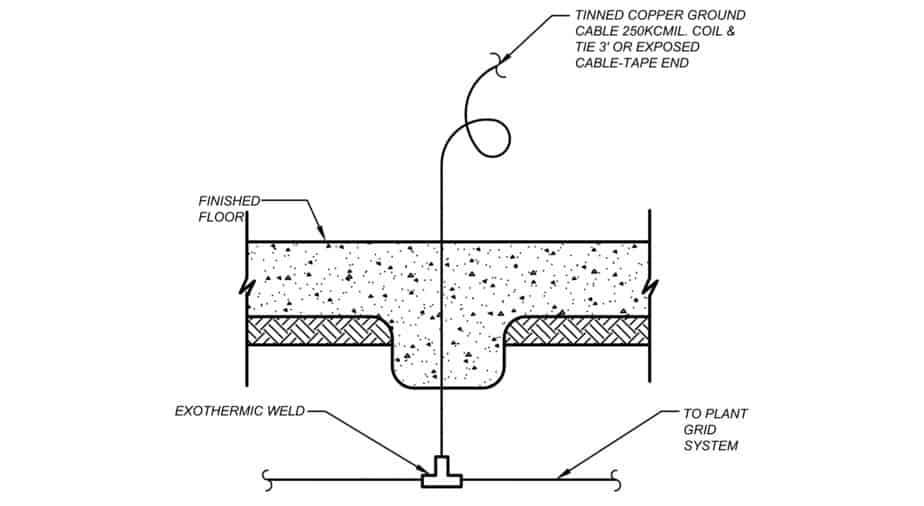Building an amazing engineer-client relationship is challenging, but when done right, it boosts your profits and earns you repeat customers.
So, let me share with you 18 no-nonsense tips I’ve gathered throughout my wild ride, working with an incredibly diverse bunch of clients – from dream customers to straight-up horror stories. I’ve seen it all, having collaborated with the most prestigious private firms and bigwig government agencies.

#1 Define the project’s scope of work with crystal clarity
Team up with your client to create a rock-solid scope of work, making sure to outline every single deliverable.
Don’t just give the project scope a quick once-over. Dive in deep and trust your instincts – if something smells fishy, it probably is. Ask any questions you have right off the bat, so you don’t stumble into any nasty surprises later on.
Take the time to jot down every little detail of the scope items. This is especially crucial in engineering, where accuracy is the name of the game.
When I create a well-defined scope of work, I establish clear boundaries for my work. If anything comes up that falls outside of those boundaries, I can always refer back to our signed contract and avoid any future finger-pointing.
#2 Stick to your area of expertise
Don’t try to tackle work in an area where you’re out of your depth or give advice on subjects you’re not an expert in.
Sure, your client might be thrilled when you accept that kind of work, but if things go belly up, you’ll be the one facing the music. Don’t let a client’s sweet talk sway you.
As an electrical engineer, I’ve had loads of clients ask me to do structural work. They’ll say stuff like:
- “It’s quick and easy.”
- “I could even do it myself.”
- “We’ve done this a hundred times before, no problem.”
- “You’re a smart engineer; you can figure it out.”
Most times, I could do the work, but I’m not keen on the liability. Plus, a serious client would hire a specialist instead of cutting corners.
#3 Set boundaries in your engineer-client relationship
Lay down clear work roles to stop clients from overstepping their bounds.
For example, a client might try to micromanage your design step by step. That’s not a recipe for a healthy engineer-client relationship. They hired you as an expert for a reason, so your job isn’t to dance to their every tune.
If this turns into a recurring problem, remind them that you’re the design engineer they hired. It’s like telling a dentist how to do a root canal.

Important Note: Always create what the client wants, but if their design is unreasonable, explain the drawbacks. If they still want to proceed, do so with written documentation, as long as it doesn’t violate codes, regulations, or put safety at risk.
#4 Embrace the beauty of imperfection in design work
Show your client that perfection is unattainable, no matter the budget. Give them realistic expectations of your services.
I always let clients know that hiccups are bound to happen, particularly in intricate projects. Even the most meticulous planning can’t stop them.
Hopefully, most errors aren’t due to your negligence but are beyond your control, such as:
- A product update making part of your design obsolete.
- An inspector having a bad day and rejecting your design, requesting changes.
In summary, being an expert doesn’t mean your project will be picture-perfect.
#5 Hit project deadlines out of the park
When discussing deadlines, always commit to ones you can achieve, or even better, surpass. The secret sauce to winning over clients is to under-promise and over-deliver.
I love surprising clients by delivering a week or two early whenever possible. I also make sure never to miss deadlines. Because a missed deadline can lead to a whole mess of problems, like:
- Money down the drain
- Frustrated clients
- Losing ground to competitors
- Trust issues
#6 Keep clients in the loop with project updates
Nobody likes to be left in the dark, especially when their hard-earned cash is on the line. That’s why I make it a point to keep my clients updated on their projects.
Think about how nerve-wracking it is to wait ages for a reply from a service you’re paying for, or worse, being straight-up ignored.
So, I like to send a friendly update every couple of weeks. But remember, balance is key. You don’t want to bombard your client with so many updates that they start micromanaging. Finding the sweet spot is different for every client.
#7 Steer clear of guarantees
Clients can get stars in their eyes when they see your engineering prowess, but it’s important not to promise the moon if you can’t deliver. For example, don’t swear your design will be approved by an inspector on the first go.
I’ve had designs that sailed through reviews for years suddenly get a big fat rejection stamp. And you know what? It’s often because of stuff like:
- A new inspector shaking things up
- An inspector who’s just having a bad day
- Changes in review standards
- Different review committee rules from city to city
I’ve learned the hard way that making promises I can’t keep only leads to disappointed clients. Now, I focus on being honest about the process and avoiding guarantees that might blow up in my face.
#8 Put it all in writing
We’ve all been there – you and your client have a great chat, but a few weeks later, nobody remembers what was said. Or worse, clients might forget certain details when it’s convenient for them.
That’s why I document every conversation like my life depends on it. It has saved my ass more than once when a client insisted they never said something, and I could whip out an email to prove them wrong.
Stay ahead of the game and cover your bases. Trust me, I’ve had my share of clients who suddenly developed amnesia about things they were once so adamant about.

Important Note: After a phone call, follow up with an email summarizing the discussion and ask your client to confirm receipt. Even if they don’t reply, you’ll have a record of your email.
#9 Use visual aids for better explanations

We humans love visuals. We just get it when we see pictures, way better than reading words.
If your client’s struggling to wrap their head around your explanation, whip up a simple sketch. Not only will they get the picture, but they’ll also appreciate the extra mile you went. Most engineers don’t bother with that step.
#10 Keep it professional, yet friendly
We all know it’s easy to get too chummy with clients, but that can sometimes backfire. Just like lending money to family and friends can get messy, so can mixing business with pleasure.
Sure, there are exceptions—I’ve made some fantastic friendships with clients. But in most cases, I keep things on a professional level. That doesn’t mean I’m cold or rude, just aware of boundaries.
#11 Speak their language
Lose the technical mumbo jumbo and talk like a real person. Save the industry lingo for your fellow engineers. After all, you’re not trying to confuse your clients or show off.
I’ve caught clients nodding along when I’ve accidentally used jargon, but the truth is, they’re just trying to save face. So, as a skilled engineer, it’s up to you to make things crystal clear.
And, remember Tip #1, if your client is unclear about something, it can lead to a whole lot of trouble.
#12 Master the art of listening
Give your clients the space to express themselves and don’t assume you know what they want. It’s tempting to guide them right away, flaunting your expertise. But, do this only after hearing their thoughts, so you can gauge their ideas.
For instance, you might tackle a design the same way 99 out of 100 times without any fuss. But now and then, a client pops up with a design that flips everything upside down. I’ve been there.
At first, I told the client their design idea seemed weird and inadvisable, explaining why I’d never seen it before. But after lending them my ear, everything clicked, and I grasped their unique design vision.
#13 Deliver top-notch engineering work
Even when dealing with a difficult client, your responsibility is to provide excellent design work without exception!
Your reputation as an engineer is at stake, especially since you’ve signed a contract. Plus, your work will impact the public.
Imagine if a doctor botched your surgery because they thought you were an ass. Lawyers would have a field day with that doctor.
#14 Always ask your questions
Whether at the start, midway, or end of a project, never stop asking questions. Sometimes, certain design aspects slip by, or questions don’t hit you until you’re deep into a design.
You might feel silly for asking basic design questions late in the game, but who cares? It’s better to tackle all issues during the design phase rather than later on.
#15 Own up to your mistakes
Nobody’s perfect. If you goof up, own it, even if it makes you look like a fool. The longer a mistake goes unnoticed, the pricier it gets.
I know it’s tough, but it’s the right move when a client is shelling out good money for a design. Your work impacts consumers and public safety to some extent, and you have a duty as an engineer, according to the engineering code of ethics.
And for Pete’s sake, don’t ever try to hide a mistake, thinking your client won’t find out. A blunder will always come back to bite you, even if it takes a decade.
#16 Take a stand, but be respectful
If a client provides you with false information, call them out. Don’t be a doormat. Just remember to do it respectfully.
Suppose your client tells you something is 20 feet long, but during the design review, they question why you used 20 feet instead of 22. In this case, gently remind them they initially gave you the 20-foot measurement. This way, you dodge blame for delays, appearing careless, or squandering billable hours you can’t afford to lose.
Furthermore, if a change leads to extra work, issue a change order. And don’t forget, keeping everything documented in writing is crucial for this very reason.
#17 Embrace personality differences
Clients come in all shapes, sizes, and personalities. Get to know your client’s quirks to enhance your working relationship, and try not to take things personally.
For example, if someone’s got a blunt or rough-around-the-edges vibe, keep that in mind and don’t let it ruffle your feathers. Stay cool, calm, and collected.
As someone who’s worked with clients from all corners of the globe, I’ve witnessed a colorful array of approaches to business. I’ve learned not to take things to heart; each engineer-client bond is truly unique.
#18 Go the extra mile
Give ’em more than they bargained for!
We all love getting extra bang for our buck, right? Picture your favorite restaurant or car. When you get more than you expected, it’s like an instant mood booster. That’s why I’m all about giving back to my awesome clients.
My goal is to make the design process a breeze for them. So, here’s what I do:
- Stay available on weekends
- Add extra details to my designs
- Strive for perfection through multiple reviews
- Involve clients in the design process and seek their input
- Always keep it respectful and professional
Going above and beyond isn’t rocket science. Sure, it might take a tad more time, but it’s totally worth it for those rock-solid relationships and personal growth as an engineer.
Conclusion
Put these 18 tips to work and watch your engineer-client relationships blossom.
Now, every client is different, and you might need a bit of trial and error at first. But soon enough, you’ll be a pro at navigating all sorts of client personalities, which means less stress and smoother sailing.
Plus, a solid engineer-client connection leads to top-notch engineering projects. So, in the end, it’s a win-win!
What’s your go-to tip for improving an engineer-client relationship? What makes a client unbearable to work with?
